Beekeeping is all about keeping those buzzers happy and healthy. When nature doesn’t provide enough nectar, that’s where bee hive feeders swoop in to save the day. These helpful tools give bees extra food, ensuring they have the energy they need to thrive.
Picking the right feeder isn’t just about doling out sugar water. It’s a fine art that can make or break your hive’s well-being. By grasping the basics of each type of feeder, you’re setting your little workers up for success, helping them survive through tougher seasons and expand their community.
The gadgets beekeepers use have morphed over time, driven by innovative minds and a better understanding of bee behavior. Feeders have journeyed from basic setups to sophisticated systems, ready to meet the evolving demands of modern hives. Whether you’re a rookie or a seasoned beekeeper, tuning in to these advancements can really step up your beekeeping game.
Types of Bee Hive Feeders
There’s no one-size-fits-all when it comes to bee hive feeders, and picking the right one can really depend on your hive’s needs and your personal preferences. So, let’s break down the popular types out there: Frame, Boardman, Top, and Division Board feeders each come with their own set of perks and quirks.
Frame feeders sit snugly inside the hive, replacing a frame. They’re great if you want a sturdy solution that doesn’t tempt robbers since the feed stays inside. However, they might be a little tricky to refill without suiting up and disturbing the hive.
Boardman feeders are like window service for bees. They attach right outside the entrance, allowing easy refills. While they’re super convenient, they’re also a bullseye for robber bees and ants, so vigilance is key.
Top feeders fit over the hive, allowing bees to gorge themselves from above. They’re fantastic during winter since they lower the risk of drowning and don’t require constant refilling. Still, moisture management is vital to prevent problems like condensation.
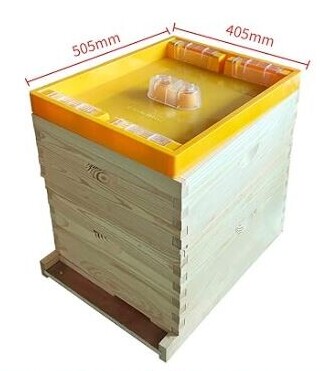
CHECK OUT PRICING HERE
Division Board feeders offer a clever balance between in-hive and outer-access convenience. Sitting within the hive, they help avoid robbing and chilling but can demand more work to manage without disturbing the nesting bees.
Choosing the right feeder is all about knowing what works best for your beekeeping setup and your bees’ health, making feeding time less of a chore and more of a support system for the buzzing crew.
Advantages and Drawbacks of Frame Feeders
Frame feeders, the discreet choice, slide right into the hive, replacing a regular frame. This keeps the feeding process internal, which is a solid strategy against honey robbers looking to waltz away with your hard-earned syrup.
The self-contained nature of frame feeders means bees can munch away without exposure to the outside world, maintaining hive warmth—especially handy during those brisk, chilly days. And with plenty of space inside them, you won’t be running out to refill every other day.
But hey, it’s not all smooth sailing with these guys. Rummaging inside the hive to refill can expose the bees to cold or stress if you aren’t careful. Plus, the feeder can become a bit of a swimming pool hazard if not managed properly. Floating setups can help with that, keeping more bees alive and kicking.
Think of their placement as a minor game of Tetris. Nestling them correctly ensures bees can access food without getting in each other’s way. Pro tip: collaborate with the hive’s design, not against it.
You can buy a cover for the frame feeders that have a type of a ladder for the honeybees to use that minimizes casualties.
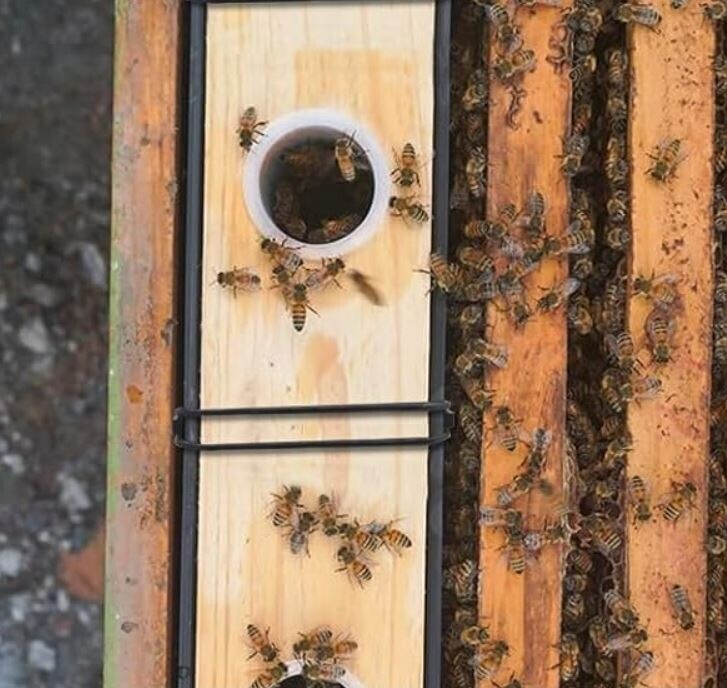
CHECK OUT PRICING HERE
Knowing the ins and outs of frame feeders guides you in counteracting their weaknesses while boosting their many strengths, keeping that buzzing community happy and thriving.
Expert Tips for Using Boardman Feeders
Boardman feeders, also known as entrance feeders, offer a front-row seat to the goings-on around your hive. Their prime spot makes refilling as easy as pie, but it also comes with its quirks.
Setting up a Boardman feeder is a piece of cake. Simply slide it into the entrance slot, where it can hold a jar of sugar syrup securely. But this straightforward setup needs a watchful eye to prevent external pests from spotting an easy target.
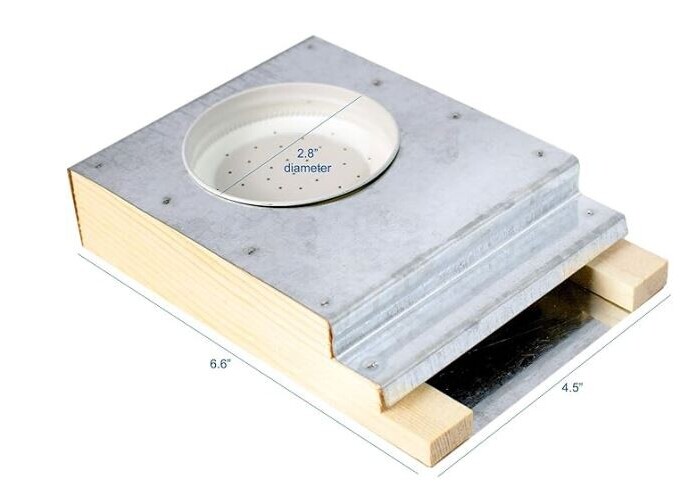
CHECK OUT PRICING HERE
Guarding against robbing is priority number one with this setup. Stronger hives might feel encouraged to steal from weaker ones or even from yours if the feeder’s exposed. Bee on high alert and consider using entrance reducers or screens to manage bee traffic and deter intruders.
Keeping the feeder tidy is key to preventing mold growth and ensuring your bees get fresh, clean food. Regular checks and cleanings can keep the setup running smoothly and extend the lifespan of your equipment.
These feeders are particularly handy during the spring or a warm autumn when temperatures allow for easy use, yet making sure it’s a safe fit within your bee’s foraging environment. That’s how you make it work for you, ensuring the bees get the best without inviting more pest problems than you bargained for.
Top Feeder Insights: Perfect for Winter Use
When the chill sets in, top feeders show their strength, offering a cozy way for bees to access their stash above the hive. With their placement at the top, they help avoid the icy drafts that bottom feeders might invite, keeping the buzzing crew comfy.
These feeders have ample space for syrup, so you won’t need to interrupt your bees often. That’s a win for winter hives, as minimal disruption can keep them less stressed and more productive.
Despite their cold-weather benefits, moisture is a foe. Condensation can become a thorny issue if not managed. Ventilation grooves or absorbent materials can work wonders in keeping things dry, ensuring your syrup stays nourishing and free of unwanted watering down.
Using top feeders means understanding the balance between insulation and airflow, ensuring that bees tap into their food with ease. Checking seals and barriers can prevent syrup from spilling and keep the packaging tight during those frosty conditions.
With troubleshooting common issues as part of your routine, top feeders can become a go-to strategy for managing hive health during those cold, slow-foraging months. That’s a partnership any bee can buzz in favor of!
Sustainability and Best Practices
The future of beekeeping hinges on smart, sustainable practices, and choosing eco-friendly materials for your feeders plays a big part. Considering feeders made of recycled materials or wood not only supports sustainability but helps reduce the ecological footprint of beekeeping.
Innovative feeding techniques are popping up, offering new ways for hives to thrive. Alternatives like creating nutrient-rich pollen patties can complement traditional sugar syrup, providing bees with well-rounded nutrition while supporting natural behaviors.
Keeping bees healthy involves more than just selecting the right feeder. Understanding their natural cycles and adjusting your feeding strategies accordingly is crucial. Consider providing smaller, more frequent amounts of feed in spring when activity rises and larger reserves in fall to prep them for winter.
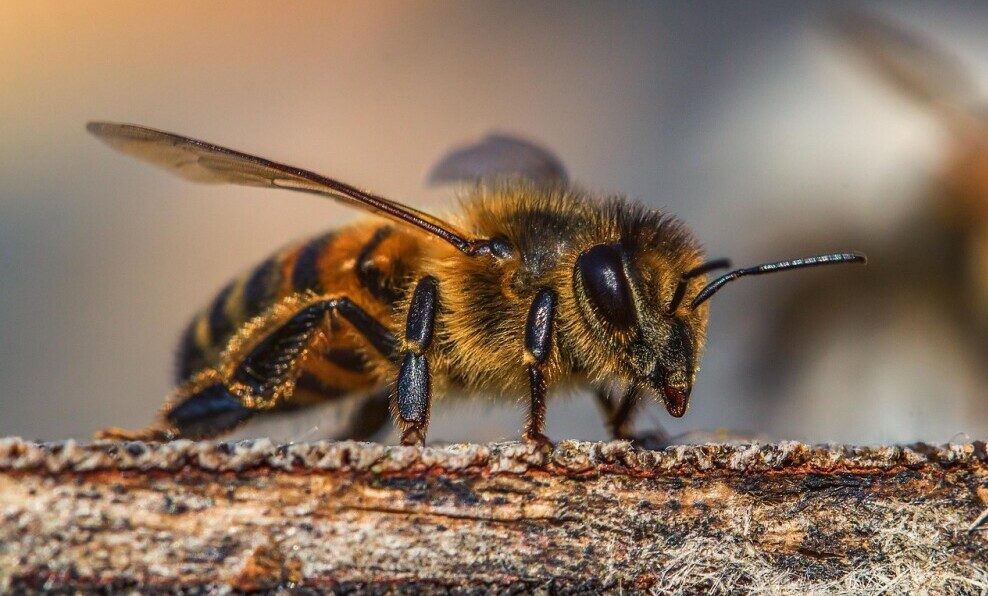
Engaging in active forums or Q&A sessions with fellow beekeepers, both online and offline, can demystify common misconceptions about feeders. Sharing experiences and advice leads to learning what truly works best for different climates and hive strengths.
Embracing best practices, whether you’re starting out or have been in the game for a while, means taking a holistic approach to beekeeping. Keeping it natural, sustainable, and mindful ensures both your bees and the planet are getting the best support possible.
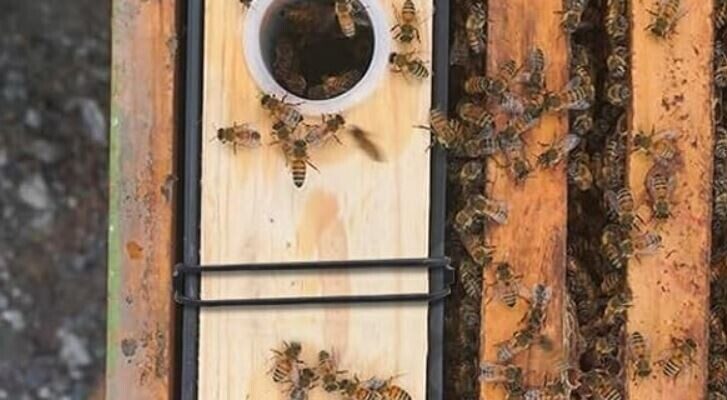
2 comments on “Bee Hive Feeders: Types And How To Use Them”
Benjamin Maloney
October 30, 2024 at 6:12 pmAwesome breakdown on bee feeders!
It’s fascinating how much thought goes into even the smallest decisions for hive health, from balancing accessibility to fighting off robbers.
I never realized how the type of feeder could impact everything from warmth to preventing unwanted visitors.
For seasoned beekeepers out there, have you found certain feeders work better for specific seasons or weather conditions?
I’d love to hear what’s worked (or maybe not worked) for others!
Randi
October 30, 2024 at 7:18 pmThanks so much! Choosing the right feeder really does come down to personal preference—each type has its pros and cons, as I mentioned in the article. Some work better in certain seasons, but it’s all about finding what fits your hive’s needs best.